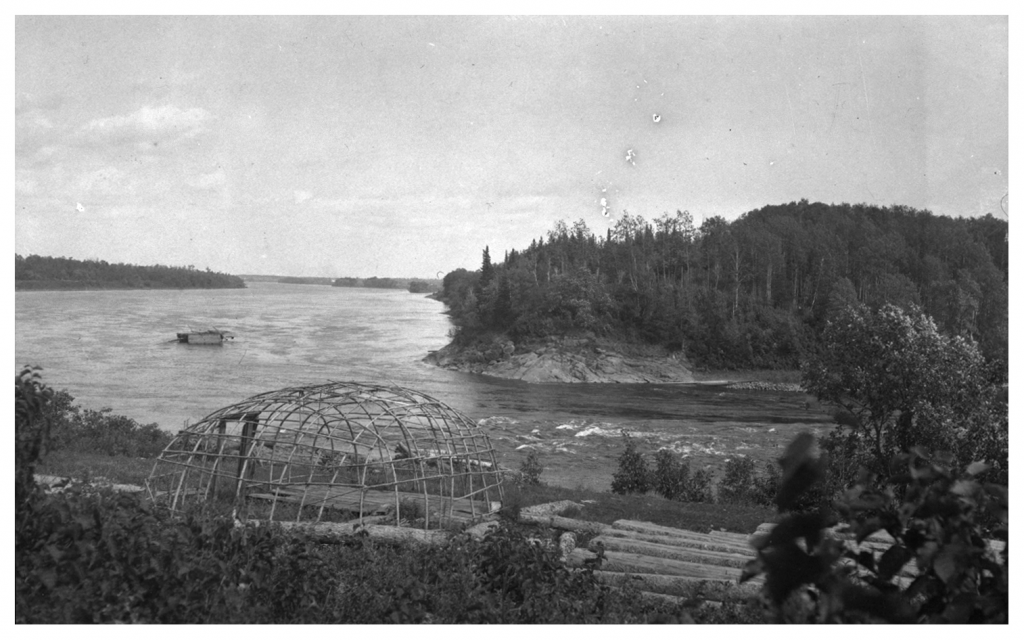Wigwam
A wigwam is a dome-shaped dwelling, built with young saplings for a frame. It is typically covered in bark, moss, or branches with leaves, depending on the season. Community builders left a hole in the center of the roof for the smoke of the fire to travel to the sky. A wigwam is a traditional home of the Ojibwe and other Indigenous nations.
Du Vernet identifies wigwams twice during his visit. On July 15, he comments that wigwams are found on the Canadian side of the Rainy River along with homes that are shingled. He suggests that this is a summer home. On July 17, he compares wigwam to a teepee, recognizing that teepee is a Sioux word while wigwam is an “Ojibwe” word. This is an interesting moment, when he shows that he knows that all “Indians” are not the same and do not speak the same languages.
